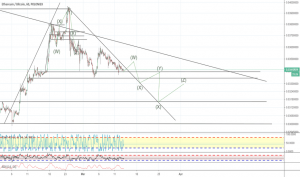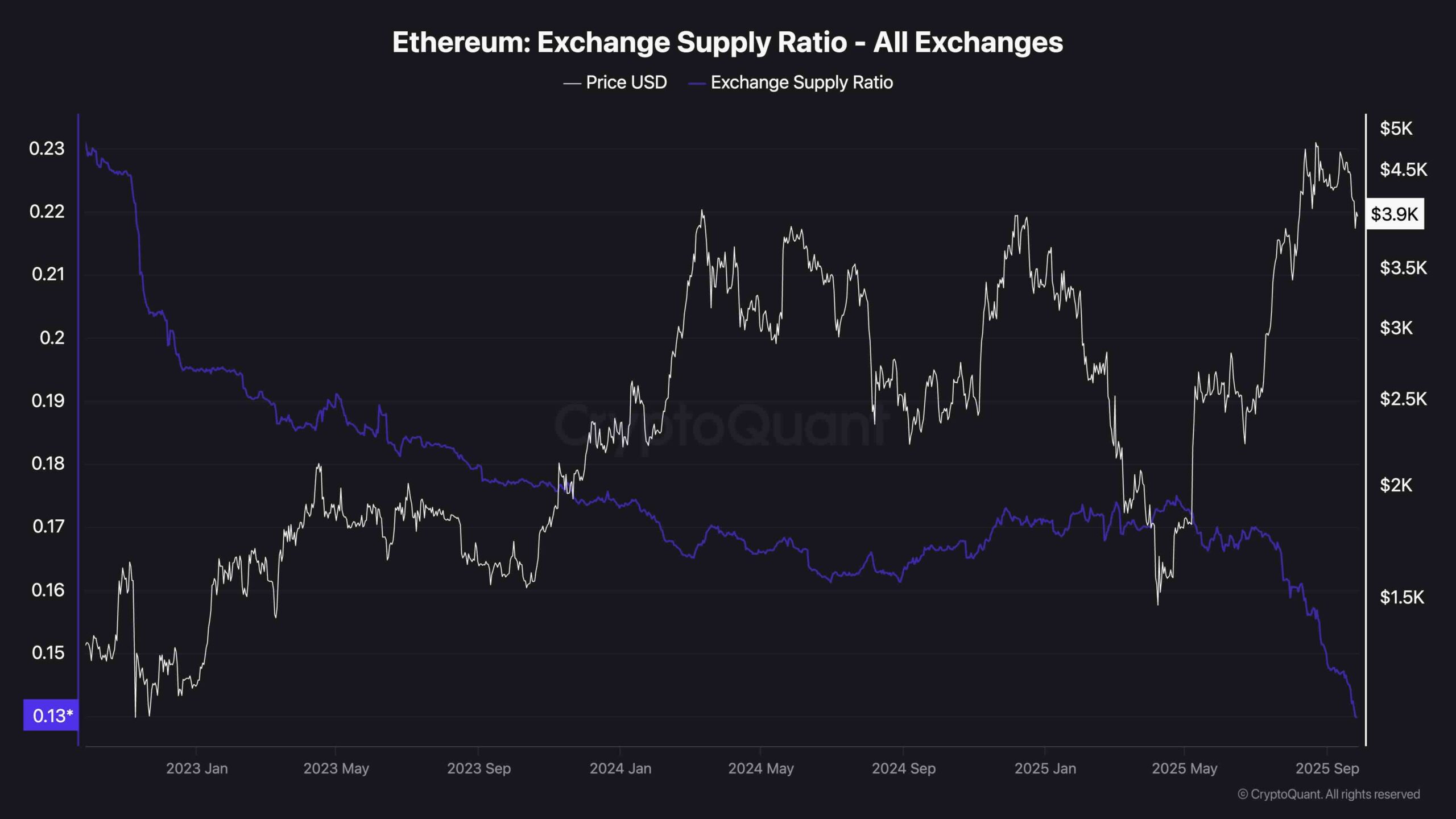Eth And Btc Price Trends Insights And Predictions
With eth and btc price at the forefront, the cryptocurrency landscape is always buzzing with excitement and unpredictability. Investors and enthusiasts alike are keen to grasp the nuances of price fluctuations, driven by a multitude of factors ranging from market dynamics to technological advancements.
Exploring the historical trends, current statistics, and future predictions of Ethereum and Bitcoin provides a comprehensive view of what influences their values. This journey not only highlights the impact of market events and regulations but also delves into investment strategies that can help navigate the complexities of these digital currencies.
Overview of ETH and BTC Prices
The cryptocurrency market has witnessed remarkable fluctuations over the years, with Ethereum (ETH) and Bitcoin (BTC) leading the charge. Both currencies have shown their unique historical price trends that reflect changes in market sentiment, technological advancements, and external economic factors. In this section, we will delve into the price trends of ETH and BTC, factors influencing these movements, and a performance comparison between the two giants.
Historical Price Trends
Bitcoin, being the first cryptocurrency launched in 2009, experienced significant price increases, notably during the 2017 boom when BTC soared to nearly $20,000. Following a lengthy bear market, Bitcoin’s price surged to an all-time high of around $64,000 in 2021, driven by increasing institutional adoption and macroeconomic factors. Ethereum, introduced in 2015, has also shown price appreciation, notably hitting all-time highs that correlated with the rise of decentralized finance (DeFi) and non-fungible tokens (NFTs).
Recently, ETH has been trading around $4,000, showcasing its growth and significance within the crypto ecosystem.
Factors Influencing Price Movements
Several factors influence the price movements of ETH and BTC. Key among them are:
- Market Sentiment: Investor sentiment plays a crucial role in price fluctuations. Bullish trends often lead to increased buying pressure.
- Technological Developments: Upgrades and new features such as Ethereum’s transition to proof-of-stake with the Ethereum 2.0 upgrade significantly impact prices.
- Macro-Economic Factors: Economic policies, inflation rates, and global market trends can affect investor confidence and purchasing behavior.
Recent Price Statistics and Performance Comparison
In recent months, Bitcoin and Ethereum have shown varied performance metrics. As of the latest data, Bitcoin’s market cap stands at approximately $900 billion, while Ethereum’s is around $450 billion. The price ratio of BTC to ETH has fluctuated, indicating shifts in market dynamics.
Market Influences on ETH and BTC Prices
The cryptocurrency market is highly volatile and influenced by numerous external events. This section Artikels significant market events that have impacted the prices of ETH and BTC, including regulatory developments and institutional investments.
Major Market Events
Over the past year, several market events have impacted ETH and BTC prices significantly:
- Market Crashes: Sudden drops in prices occurred during regulatory announcements in various countries, leading to panic selling.
- Adoption by Major Corporations: Companies like Tesla and Square investing in Bitcoin have provided legitimacy and support for price increases.
- Technological Breakthroughs: Ethereum’s transition to proof-of-stake created optimism, leading to price rallies in ETH.
Role of Regulatory Developments

Regulatory changes have profound effects on cryptocurrency prices. Governments considering stricter regulations or outright bans can create uncertainty, leading to price declines. Conversely, supportive regulatory frameworks help in price appreciation by increasing investor confidence.
Influence of Institutional Investments
The influx of institutional investments has been a significant driver for both ETH and BTC prices. Major investment firms and public companies entering the crypto market have led to heightened interest and confidence among retail investors, resulting in upward price movements.
Technical Analysis of ETH and BTC
Technical analysis plays a vital role in understanding price movements and predicting future trends for cryptocurrencies. This section provides an overview of popular indicators and a comparison of ETH and BTC’s current technical indicators.
Popular Technical Indicators
Traders often use several popular indicators to analyze ETH and BTC prices:
- Moving Averages: Simple and exponential moving averages help identify trends over various time frames.
- Relative Strength Index (RSI): This momentum oscillator measures the speed and change of price movements to determine overbought or oversold conditions.
- Bollinger Bands: These bands are used to measure market volatility and help traders identify potential entry and exit points.
Current Technical Indicators Comparison
Here is a summary table of the current technical indicators for ETH and BTC:
| Indicator | ETH | BTC |
|---|---|---|
| Moving Average (50 days) | $3,800 | $58,000 |
| RSI | 70 (Overbought) | 65 (Overbought) |
| Bollinger Bands | Upper: $4,200, Lower: $3,500 | Upper: $62,000, Lower: $54,000 |
Patterns Observed in Pricing Charts
Recent months have shown several patterns in ETH and BTC pricing charts. For instance, both cryptocurrencies have experienced bullish flags, indicating potential upward price movements. Conversely, bear flags were also noted during market corrections, reflecting typical trading behaviors during downturns.
Future Price Predictions for ETH and BTC
Expert predictions regarding the future price trajectories of ETH and BTC vary widely, reflecting the inherent uncertainty in the cryptocurrency market. This section discusses potential future scenarios based on current trends and expert analyses.
Expert Opinions on Future Trajectories
Market analysts predict various potential outcomes for ETH and BTC prices in the coming months:
- Some experts foresee Bitcoin reaching $100,000 by the end of the year, driven by increased institutional adoption and scarcity due to halving events.
- Ethereum is expected to rise significantly as DeFi and NFT markets continue to expand, with estimates suggesting a range between $5,000 and $7,000 within the next few quarters.
Potential Price Scenarios
Potential scenarios for ETH and BTC pricing include:
- Bullish Scenario: Both cryptocurrencies experience explosive growth, hitting record highs due to mainstream adoption.
- Bearish Scenario: Regulatory pressures and market corrections lead to sharp declines, revisiting previous low levels.
- Stagnation Scenario: Prices stabilize with minor fluctuations as the market matures and adjusts to regulatory frameworks.
Analyst Predictions Summary
The following table summarizes predictions from various analysts regarding ETH and BTC:
| Analyst | BTC Prediction | ETH Prediction |
|---|---|---|
| Analyst A | $100,000 | $5,500 |
| Analyst B | $85,000 | $7,000 |
| Analyst C | $90,000 | $6,000 |
Investment Strategies for ETH and BTC
Investing in cryptocurrencies like ETH and BTC requires a clear strategy to maximize returns while managing risks. This section provides insight into various investment strategies, risks, and benefits associated with investing in these two cryptocurrencies.
Investment Strategies
Investors can adopt several strategies when investing in ETH and BTC:
- Dollar-Cost Averaging: Regularly investing a fixed amount to minimize risk and reduce the impact of volatility.
- HODLing: Holding onto investments for the long term regardless of market fluctuations.
- Active Trading: Taking advantage of short-term price movements, requiring a keen understanding of market dynamics.
Risks and Benefits of Investing
Investing in ETH versus BTC carries unique risks and benefits:
- Risks: Market volatility, regulatory changes, technological vulnerabilities, and liquidity issues.
- Benefits: Potential for high returns, diversification of investment portfolios, and exposure to innovative technologies.
Key Considerations for New Investors

New investors should consider the following key points:
- Understand the technology behind both cryptocurrencies.
- Stay updated on market trends and regulatory news.
- Diversify investments to mitigate risks.
- Be prepared for market volatility and set realistic expectations.
Comparisons Between ETH and BTC

A comparison between Ethereum and Bitcoin reveals significant differences in their technological foundations and implications for pricing.
Technological Foundations
The technological frameworks of ETH and BTC directly affect their pricing dynamics:
- Bitcoin operates on a proof-of-work consensus algorithm, primarily focusing on security and decentralization.
- Ethereum, on the other hand, is transitioning to a proof-of-stake model, promoting scalability and energy efficiency, which can influence investor interest.
Use Cases and Price Relation
Both cryptocurrencies serve different purposes, which affect their valuations:
- Bitcoin is primarily viewed as a store of value, often referred to as “digital gold,” influencing its price stability.
- Ethereum supports smart contracts and decentralized applications (dApps), leading to increased demand, particularly with the rise of DeFi and NFTs.
Comparison Table of Key Aspects
The table below summarizes the differences between ETH and BTC across several key aspects:
| Aspect | Bitcoin (BTC) | Ethereum (ETH) |
|---|---|---|
| Market Cap | $900 billion | $450 billion |
| Transaction Speed | 10 minutes | 15 seconds |
| Supply | 21 million BTC | Unlimited (with inflationary supply) |
End of Discussion
In summary, understanding the eth and btc price landscape reveals a story filled with potential and risk. As we look to the future, it’s essential to stay informed about market influences and developments that may shape the trajectories of these prominent cryptocurrencies. Whether you are an investor or a curious observer, the evolving world of ETH and BTC continues to offer both challenges and opportunities.
FAQ Resource
What factors affect the price of ETH and BTC?
The prices of ETH and BTC are influenced by market demand and supply, regulatory news, technological developments, and investor sentiment.
How can I analyze ETH and BTC price trends?
You can use various technical indicators such as moving averages, RSI, and MACD, along with fundamental analysis to assess price trends.
What is the significance of institutional investment in ETH and BTC?
Institutional investments can drive significant demand, often leading to price increases due to their large capital inflows into the market.
Are ETH and BTC good long-term investments?
Both ETH and BTC have shown potential for long-term growth, but they also carry risks. It’s vital to do thorough research before investing.
How do ETH and BTC compare in terms of transaction speed?
Typically, BTC transactions are slower compared to ETH due to Ethereum’s different consensus mechanism and transaction processing capabilities.



